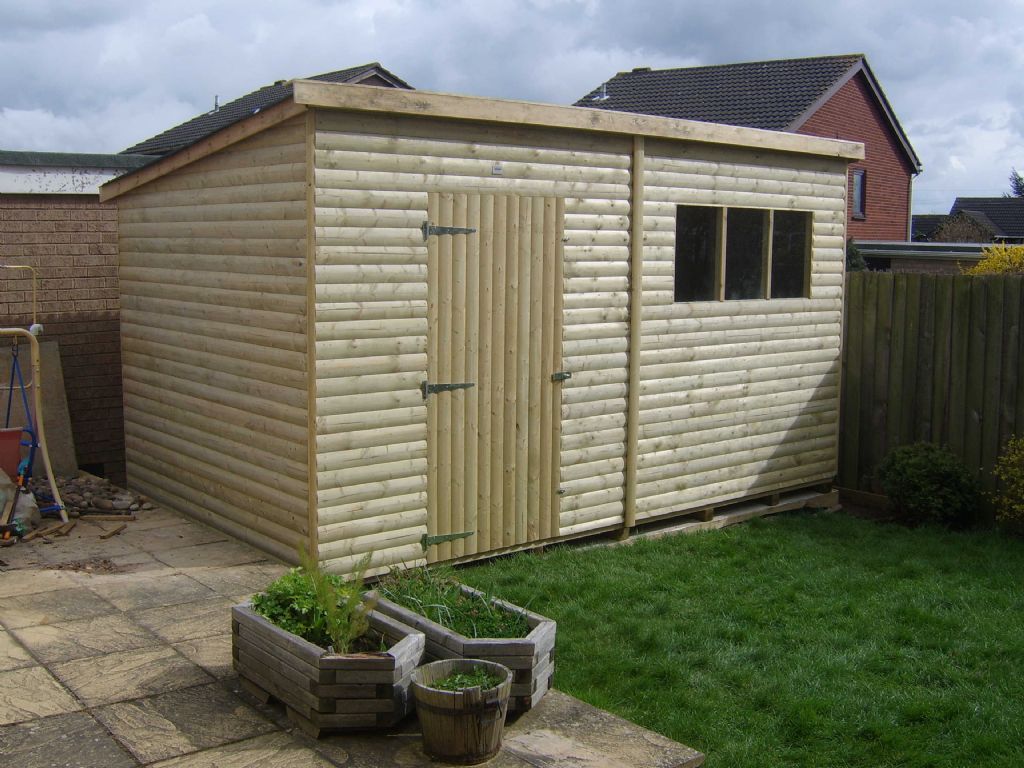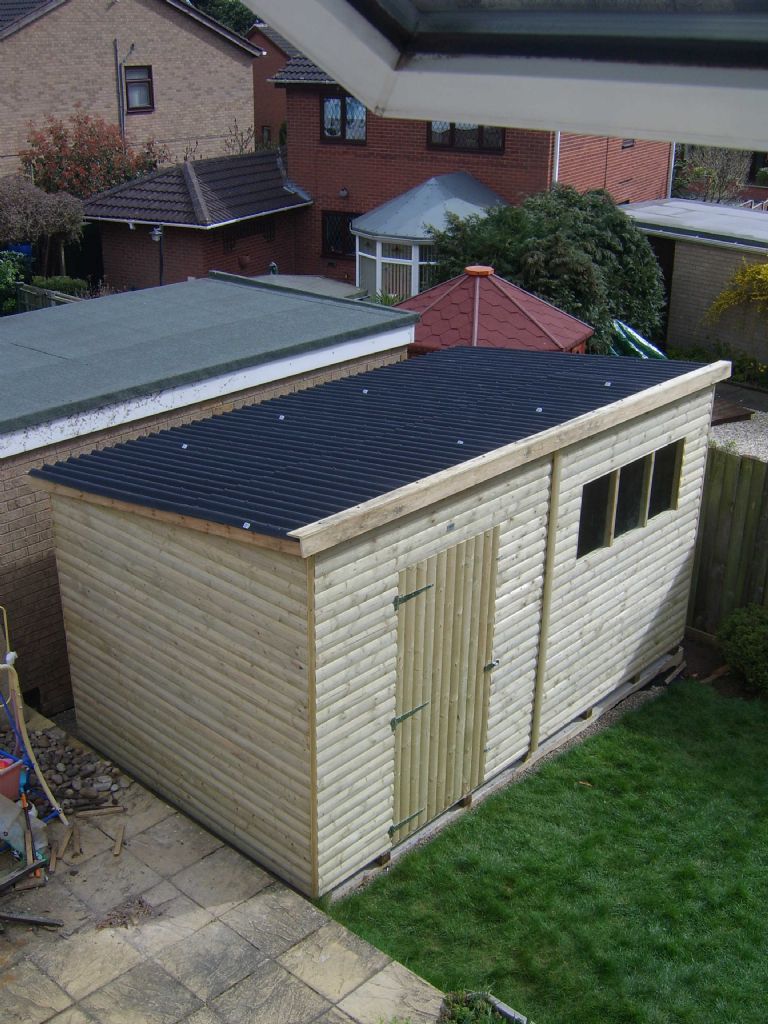For what its worth, this is my experience.
First shed, some 50 years ago, was a 7 x 5 Baths Portable Building, with a corrugated asbestos roof. With the bench tied to the framework, it cost a fortune in replacing glass when the thing flexed as I heaved on things in the vice.
Second was supposedly 8 x 6 (It was externally, but the 50mm framing meant that the internal size was about the same as before)
Neither was insulated, and rust was a problem. The oil put on the bed of the Myford was often milky when I next went in.
As already said INSULATE!
Current workshop is ten, nearly eleven years old, 10'9" x 6'9" (largest that would fit between the fence and patio wall, one way, and the back door and a tree the other. S W M B O was not going to have either the wall or the tree relocated!)
Framing is 50mm, with 19mm T & G outer cladding, glass fibre insulation and 12mm ply inner cladding.
Only the 3/4" ply floor is uninsulated – BIG mistake, cold feet even with industrial plastic matting.
Sits on five 8" x 2" bearers sitting on slabs on sand/cement. Another mistake, should have been concrete, preferably reinforced, to prevent slight "heave" as humidity alters.
The lathe weighs about 6 cwt, (300Kg) the Mill/drill about 4 cwt (200 Kg) (and it sits on a bench of about the same weight). Then there is the weight of the steel bench from door to the mill bench, plus tools and material.
So there is a lot of weight in there.
Roof construction is 12mm ply on each side of 50mm frames, with glassfibre insulation, with under felt and topfelt, secured with bitumen, so no nail holes.
Pent roof, is 8' high at front to allow room for belt cover opening, and drawbar removal from Mill/Drill, 6'6" at rear, to drain into guttering. Water runs into a butt, used by Chief Horticulturist for the garden.
Must be due for refurbishment shortly
No windows, (security and I'd only have put shelves across them anyway)
Ventilation is by a 6" fan with a rainproof outlet., and fixed vents very near to floor level.
Cost for the basic building , in 2003, was £1600, having been sub assembled, transported some 50 miles, and finally insulated and fully erected on site.
Heating is provided by a thermostatically controlled 240V 2 Kw fan heater which runs for about 10% of the time, even with ambients of 5C outside. Location is U.K. – East Anglia.
As predicted, a lot of the time, I work with the door open, not needing the heater.
Over the ten and half years life, almost no problems experienced with rust (one very small patch on a drill chuck, and another similar on the three jaw chuck)
With regard to security, as already said, no windows; the door is a second hand fire door with a six lever lock.
It is set off centre in one end, to match the 18" wide fitting bench, and to allow a decent width aisle.
I made up my own hinge bolts by turning the head off some No10 wood screws and screwing them into the door using a drill chuck, to leave about 1/2" protruding. By half closing the door, the frame is marked to drill the holes.
Power comes from the utility room via a RCD, to a ring main with eleven dual metal clad sockets (The one supplying the inverter for the lathe is a suppressed type to minimise electrical noise being fed back into the mains).
A battery back up, mains drop out, emergency light is mounted high up at the end remote from the door, to provide light for safe exit in the event of power failure.
The radio is hardly ever used, but the digital clock is useful for keeping track of meal times; as is the intercom to the house!
Lighting is by two ceiling mounted independently switched 65W fluorescent tubes, with an ex industry worklight over the vice on the narrow fitting bench, similar ones, each side of the Mill/Drill. All now fitted with LED lamps.
The lathe came with a lamp which had an appetite for the 24V 50W Halogen bulbs. Filling a couple of slots into the reflector improved ventilation and GREATLY extended lamp life.
Hope that this is of some help to any readers who wish to build or update their workshops.
Howard
Edited By Howard Lewis on 28/03/2014 11:51:24
Russ B.


 )
)



